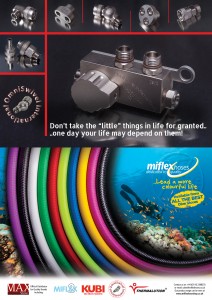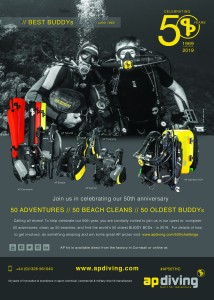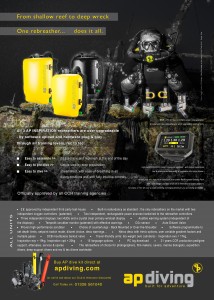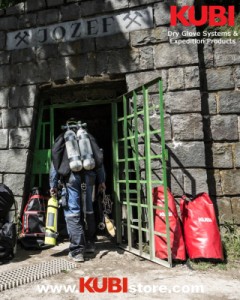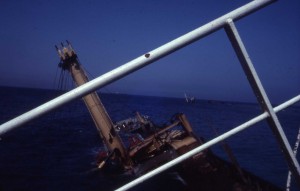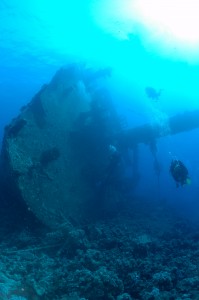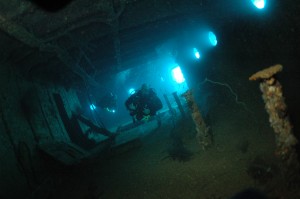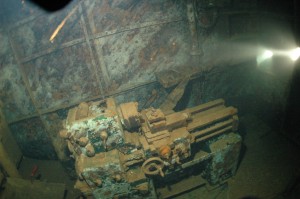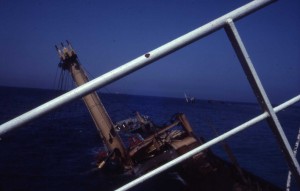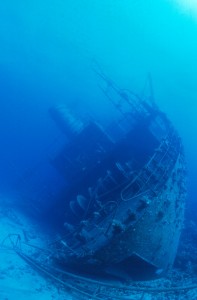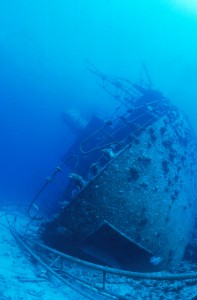DICTIONARY OF EGYPTIAN SHIPWRECKS G
DICTIONARY OF EGYPTIAN SHIPWRECKS- G
FURTHER DETAILS CAN BE DOWNLOADED FROM
www.KUBIstore.com & www.Miflexhoseshop.co.uk
H.M.S GALATEA
On 4 April 1940The Polish destroyers Burza, Grom and Blyskawica joined the British light crusiers HMS Arethusa, HMS Galatea and three British destroyers to carry out a patrol in the North Sea to intercept German invasion groups heading for Norway.
On 31 August 1940 a group of destroyers sailed from Immingham on a minelaying
mission off the Dutch coast. HMS Express struck a mine and was badly damaged, HMS Esk went to her assistance and hit mine and sank immediately, HMS Ivanhoe also went to her assistance and hit a mine and was badly damaged, so much so she she had to be sunk by HMS Kelvin. The following day they were joined by the light cruisers HMS Aurora and HMS Galatea and while returning to base HMS Galatea struck another mine and was slightly damaged off Cleaner Shoal Buoy near the Humber light vessel.
She had seen action at Dunkirk and the Bismark saga.
On December 14th 1941 , returning to Alexandria, she was subjected to a 7 hour air attack, then at midnight, HMS Galatea was torpedoed by the German submarine U-557 off Alexandria, Egypt in position 31.17N, 29.13E. She sank in 3 minutes. Captain Sim, 22 officers and 447 ratings were killed. Some 100 survivors were picked up by the British destroyers Griffin and Hotsur. U-557 was sunk the next day.
S.S.GEELONG
The Geelong (ID No.1118426) was originally built as a passenger ship of 7,954 GRT by Barclay Curle Whiteinch, Glasgow, for Blue Anchor Line Ltd., (Wilhelm Lund) London. Launched as Australia in 1904 and completed as Geelong in order to avoid confusion with the ship of the Peninsular & Oriental Steam Navigation Co. (P & O Line) of the same name
As built, she was 450.2 feet in length, 54.5 feet in beam, 26.9 feet in draught, and could carry 90 1st Class and 450 3rd Class passengers. 803 n.h.p and triple expansion engines. Sold to the P & O (Branch Line) for 88,426 GBP in 02 May 1910. In October 1910: first P & O sailing after modification to 3rd Class passengers only with space for 700 passengers. Utilized as a troop transport (HMAT A2) during WWI carrying troops of the Australian Expeditionary Forces from August 1914 to February 1915.
While on convoy on 01 January 1916 she was lost by collision with the British vessel Bonvilston approximately 100 miles north of Alexandria at position 32.46N/30.05E in over 1500 meters of water while in transit from Sydney to London via Port Said with general cargo including tea and lead
M.V GIANNIS D
THE FINAL VOYAGE.
In April 1983, the Giannis D with a cargo of wood left Rijeka, Croatia bound for Jeddah, Saudi Arabia and Hodeidah in Yemen. She passed through the Suez Canal and headed south through the Gulf of Suez, and according to official reports suddenly veered of course headlong onto the north west corner of Abu Nu Has
At 04.00 hrs, April 19th 1983 Lawson Wood and myself were woken by a very excited skipper of the Lady Jenny 111.He had listened in to an S.O.S. and subsequent rescue of the crew of the Greek cargo vessel Giannis D. Crew abandoned vessel, which is listing, and taken by an Egyptian tug to an oil platform and then by helicopter to the mainland. From the transmissions we were able to locate where the ship had struck and at dawn we were face to face with an amazing site ~
that of a freighter listing to port, hard and fast into the northern face of Abu Nuhas , her deck cargo of mahogany being tossed up into the air like matchsticks.
So excited and intent on this spectacle we over looked THREE other wrecks (KIMON M , MARCUS, CHRISOULA K).An initial survey around the ship revealed a huge tear in her side, and she had settled into the reef in an attitude that has remained to this day. We boarded the now abandoned ship and explored all the upper (dry) areas , retrieving the ships plans and other artefacts.
A dive from the upper accommodation through the ship to the tear in her hull was made easier with the use of the recovered ships plans, and a survey of the surrounding reef showed the devastation caused by the grounding and also the water logged wood being thrashed onto the reef by the now receding storm.(It is interesting to note at this point that we were not aware of the location of the Carnatic only a few hundred yards away.) We noted the other three wrecks and vowed to return to explore them another time.
A year later the Giannis D finally broke in two and settled into the seabed, her hold flattened but her stern and bow sections very much intact. Over the years little has changed except for the invasion of many of the Red sea species of corals invertebrates and fishes which are slowly enhancing the images of this ghostly ship. The letter D on her funnel has often lead to the wreck being wrongly identified as the Dana.
THE WRECK TODAY
At the stern, her bridge, companionways, accommodation area and her engine room are all easily accessible and never fail to thrill even the most ardent of wreck divers. A photogenic shoal of Glassfish reside near the engine room vents and the obligatory Lionfish is never far away. Anthea’s too have made the wreck their home and at times it’s easy to forget this is a wreck and not a reef. It is quite an eerie sensation swimming through the bridge and companionways I had walked along in 1983.The angle at which she lies is the same, and each dive brings back that memorable day that gave the Red Sea this great wreck. Her king post reaches to within 4 mtrs of the surface and make a perfect place to off gas, The stern section is cut clean from the rest of the wreck and the port companion way rests on the seabed. Doorways at the stern allow for access into the steering room (one floor down and the engine room as well as various storerooms. Lines of portholes permit sunbeams to enter the accommodation block creating a wonderful atmosphere and a challenge for any cameraman. The stern has become a playground for divers
The mid section has collapsed, being made up of two holds, with the derrick and winches in the centre. Although morays lurk here it is not worth spending too much time as a more substantial part of the wreck waits a few minutes away further along the reef.
The bow section, which itself still intact, lying completely over onto its port side, facing away from the reef Again this provides a great photo opportunity, especially from a few meters further along the reef looking back at the bow. Anchors , windlass and deck fittings are all in situ. Again there is a sheer cut where the fo’cle has broken away mid section. Here glassfish abound, and as this section of the wreck gets less attention, healthy soft corals cover the winches and handrails. Her foremast, which runs almost horizontally with its cables and pulleys still intact, is almost a coral reef in its own right-the ladder is covered in soft corals and reef fishes abound. This is also a great view point for the bow section.
As the king post rises to within a few meters of the surface, the rib will usually moor here. Thedescent down the kingpost reveals the stern section below. Now swim aft beyond the stern and take in the view from the sandy area just off the wreck (24m). This is a good spot for photos and for orientation. Here you can locate the lower (port) corridor which gives access to the engine room Swimming up this corridor, take the second door on the right- straight into the engine room- explore the deeper part, workshops, tool store etc-and exit via the same door( return to the upper section later in the dive).Now turn right continuing along the corridor. Exit via a doorway to the left-you should now be below the bulkhead where the wreck has broken in two (24m)
From here its a short swim through the flattened holds and hatch covers to the fore-section. The bulk head will come into view first-swim beyond the bow for another great view. Swim back via the foremast-watch for a cleaning station (18m) along it back to the deck where the winches are located. Turn left and a shoal of glass fish will come into view. After exploring the fo’c’sle swim back to the stern via the flattened area, (18) watch out for batfish, morays and several anemone fish guarding their piece of real estate
Shortly the stern section looms back into view and access to the bridge, ward room canteen and store rooms is gained from a doorway on the port side. Once in the interior there are several floors to explore and a door on each level (starboard side) returns you to the upper section of the engine room-this time you can exit via the skylights to finish the dive off in 8 mtrs around the funnel and engine house.
SEPTEMBER 2019- SADLY THE CROSS BRACE OF THE KINGPOST HAS BEEN TORN OFF AND NOW LIES ON THE SEABED.THE ICONIC SHAPE IS NOW RESIGNED TO MEMORY AND PHOTOGRAPHS.THANKS TO MORONIC ACTIONS OF LOCAL DIVE MASTERS THE 4 MTR SAFETY STOP NO LONGER EXISTS
H.M.S. GAZA
The Gaza was built as a BYMS-1 Class Motor Minesweeper: Laid down 04 March 1942 as BYMS-13 by Associated Shipbuilders, Seattle, Washington, USA; Launched 27 May 1942; Completed 29 October 1942 and transferred to the Royal Navy in Great Britain 30 October 1942 and reclassified BYMS-2013; Sold to Egypt in May 1947 and renamed Gaza. Returned to U.S. custody 06 June 1947 and struck from the U.S. Navy inventory on 10 June 1947. Destroyed by fire 26 July 1950 after a fuel tank explosion off of Marsa Matruh.
Specifications:
Displacement: 270 tons (DWT 320 tons)
Lenfgth: 136 feet
Beam: 24.6-feet
Draught: 8 feet
Speed: 15 Knots
Construction material: Wood
Compliment: 32
Armament: one single 3″/50 gun mount, two 20mm AA guns,
and two depth charge racks.
Propulsion: Two 880 bhp General Motors 8-268A diesel
engines, Snow and Knobstedt single reduction gear, and
two shafts.
H.M.S.GROVE (L77):
The HMS Grove (L77) was a Type II Hunt Class Escort Destroyer of 1,050 GRT and 85.3 meters in length completed 05 February 1942 for the British Royal Navy by Swan, Hunter & Wigham Richardson Ltd., Wallsend-on-Tyne, Sunderland under the War Emergency Programme. Laid down as Admiralty No. J4199 on 28 August 1949 and launched 29 May 1941 as the first RN ship to carry the name of a fox-hunt in Nottinghamshire. She was one of 16 ships of this class ordered by the Royal Navy in 1939. She carried an as built complement of 170 officers and crew.
On 12 June 1942, under the command of CDR. J. W. Reynolds, the HMS Grove was escorting supply convoy MW-11 from alexandria to Malta. The convoy was spotted by enemy aircraft and attacked by bombers, submarines, and units of the Italian Navy. The HMS Grove was hit by two torpedoes from the German submarine U-77 (Kptlt. Heinrich Schonder) which blew off the bow of the ship which floated perpendicular in the water behind the ship’s main superstructure. Listing strongly to port and with the stern down, the ship sank in only minutes at location 32.05N/25.30E in over 2500 meters of water. Two officers and 108 ratings (crew) went down with the ship.
GULF FLEET No. 31
The Gulf Fleet No. 11 was an Offshore Supply Vessel of 294 GRT built at Quality Equipment Co. (Yard No. 147), Houma, Louisiana, USA for the Gulf Fleet Marine Company, Lafayette, Louisiana, USA. Launched in 1978, she had a length of 54.9 meters, beam of 11.6 meters, draft of 4.18 meters, with twin diesels and shafts for a speed of 12 knots.
Some sources state that the Gulf Fleet No. 31 was owned by the Zapata Gulf Marine Company instead of Gulf Fleet Marine. This doubtful due to the fact that the vessel’s name, Gulf Fleet, and that Quality Shipyard where the vessel was built is owned by Tidewater Inc., New Orleans, Louisiana, USA. Tidewater Inc. was, and still is, the owner of Quality Shipyard.
Gulf Fleet Marine acquired, through either purchase or construction, 77 vessels between 1971 and 1984 which were named Gulf Fleet No. “__” which were, for the most part, numbered sequentially from No. 1 through No. 74.The Zapata Corporation, founded by ex-US President George Bush Sr. in 1953, owned Zapata Gulf Marine until it was purchased by Tidewater Inc. in 1993……………………………………………
The Loss of the Gulf Fleet No. 31:…………………………………………………..
Miramar Index has the loss of the ship dated as being in September of 1985. However, this has been debated ever since the ship was relocated in 1995. It is believed that the ship hit the reef of north-east tip of Sha’ab rul Umm Qammar, the crew abandoning the ship, where it remained sitting atop the reef for a few weeks before dropping over the edge and descending to where she lies now. No loss of life is reported during the grounding or subsequent sinking.
The wreck today
This is definitely one for the technical divers out there. One of the deepest TEC-REC dive in the Red Sea, the descent is made down the wall of the reef until the wreck comes into view. The wreck lies upright a large rocky outcropping and perpendicular to the northeast tip of the Shaabruhr Umm Qammar Reef at a maximum depth of 108 meters. The stern is located at 105 meters where the rudders and propellers can be seen. The top of the wreck is at a 95 meters where penetration is possible in order to explore the pilothouse.
Aft of the superstructure are two cargo containers which may have been the crew’s sleeping quarters. From the forward superstructure heading aft
to the open work deck at 86 meters to check out the cranes. Aqautic life is abundant here, with soft corals, fusiliers, and a variety of other fish. The ascent is to follow the reef wall back up, staying close to the reef for deco stops. If there is a southerly current, a diver can opt to drift along the wall for a glimpse of the Colona IV at the deepest deco stop around 64-66 meters. This dive, as all technical dives do, require proper dive planning and surface support.
H.M.S GURKHA
Built at Birkenhead as the HMS LARNE, by Cammell Laird in 1939,she was 1920 ton, 354 ft long with a 37 foot beam, her tubines delivering 48,000shp making a top speed of 36.5 knots. Her armament consisted of six 4.7 inch guns, one 4 inch A.A and 4 torpedo tubes.
She became HMS GURKA when the trible class HMS GURKHA was sunk in april 1940 off Bergen. On Sept 29th 1941, under the command of Cdr Lentaigne, she attacked the Italian submarine Diaspro, in a co-ordinated attack with the Dutch destroyer HNMS ISAAC SWEERS. Next day she joined forces with her sister ship HMS LEGION and successfully sunk the Italian submarine Adua.
On jan th 1942, while off Sidi Barrani, she was torpedoed by U-133, her fuel tanks erupting causing the ship to blaze along her length. Most of the crew were rescued by the Isaac Sweers, five officers and four rating were killed
DICTIONARY OF EGYPTIAN SHIPWRECKS- G
FURTHER DETAILS CAN BE DOWNLOADED FROM
www.KUBIstore.com & www.Miflexhoseshop.co.uk
